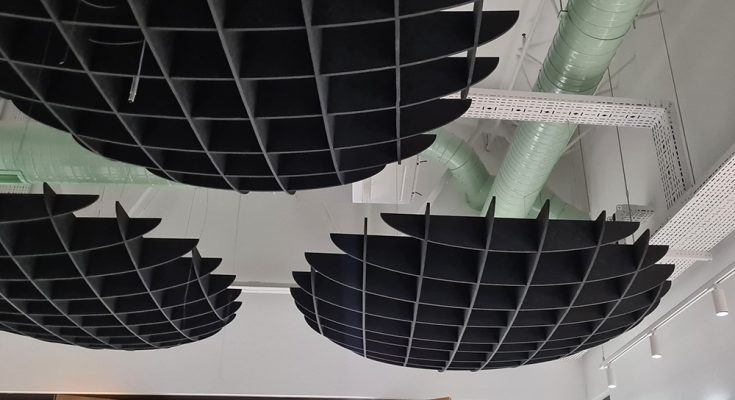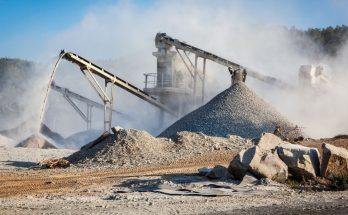As cities grow and construction projects become more common in urban areas, noise pollution is an increasing concern. Residents, businesses, and passers-by often experience significant noise disruptions from construction, which can affect health, productivity, and quality of life.
One solution that’s gained popularity in recent years is the use of noise barrier sheets—large, sound-dampening sheets that reduce the spread of construction noise. But with the growing emphasis on sustainability in construction, are noise barrier sheets truly a sustainable option?
How Noise Barrier Sheets Work
Noise barrier sheets are designed to absorb or block sound waves. Made from materials like PVC, vinyl, or composite layers, they’re often hung along the perimeter of construction sites to reduce the impact of noise on surrounding areas.
The materials in these sheets help absorb sound, minimising how much noise escapes the site and reaches nearby homes, offices, and streets.
There are two main types of noise barrier sheets:
- Absorptive Sheets: These are designed to trap and dissipate sound energy. They often feature dense, porous materials that absorb sound waves, reducing noise reflections.
- Reflective Sheets: Reflective barriers are designed to block and redirect sound waves away from sensitive areas. Although they don’t absorb sound, they help direct noise in a way that minimises its reach.
Both types can be effective for specific scenarios, but from an environmental perspective, their materials and life cycle impact must be carefully considered.

The Sustainability of Noise Barrier Sheets: Factors to Consider
When it comes to evaluating the sustainability of noise barrier sheets, several factors come into play, including the materials used, the product’s durability, and the potential for reuse or recycling.
1. Materials Used
One of the primary concerns with noise barrier sheets is the material composition. Traditional noise barriers are often made from materials like PVC or vinyl, which, while effective at blocking sound, are derived from petrochemicals and are not biodegradable.
PVC, in particular, is known to have a high environmental impact due to its production and disposal processes, which release harmful chemicals into the environment. Some manufacturers are now exploring alternatives, such as recycled rubber or bio-based composites, which offer a more eco-friendly option.
These newer materials reduce reliance on non-renewable resources and can be made from recycled or renewable sources. However, they may not always match the durability and sound-blocking properties of traditional materials, which can be a trade-off in terms of performance.
2. Durability and Reusability
The durability of a noise barrier sheet is a key factor in its sustainability. High-quality sheets can last for multiple projects, reducing the need for frequent replacements and minimising waste. Noise barriers that can withstand harsh weather, UV exposure, and physical wear are more sustainable since they don’t need to be replaced as often.
Some noise barrier sheets are designed for reusability, allowing contractors to transport them between job sites. This reusability is particularly valuable, as it extends the product’s life cycle and reduces the overall environmental impact. If a barrier can be reused across multiple construction sites without compromising effectiveness, it becomes a more sustainable choice in the long run.
3. Potential for Recycling
One of the challenges with noise barrier sheets is the difficulty of recycling them. Many sheets are made from mixed materials, which complicates recycling efforts. Vinyl and PVC, for instance, are not easily recyclable in most facilities and often end up in landfills.
However, the construction industry is beginning to adopt more circular economy principles, and some companies are working on recyclable or biodegradable noise barrier options. Sheets made from materials like recycled rubber or thermoplastic elastomers (TPE) may offer more potential for recycling, though they’re not yet widely used. The future of noise barrier sustainability will likely hinge on greater innovation in recyclable or compostable materials.
The Environmental Benefits of Using Noise Barrier Sheets
Even with some of the sustainability limitations, noise barrier sheets offer several indirect environmental benefits that contribute to greener construction practices. Here are a few ways they support sustainable goals:
1. Reducing Noise Pollution for Surrounding Communities
Noise pollution is increasingly recognised as an environmental issue with serious health implications. Excessive noise can lead to stress, sleep disturbances, and other health issues. By mitigating noise, barrier sheets protect local communities from the negative effects of construction noise, contributing to a better urban environment and higher quality of life.
2. Improving Worker Safety and Productivity
Construction sites can be overwhelmingly noisy environments. While noise barrier sheets primarily protect those outside the site, they can also help reduce noise levels within the site to some extent. Lower noise levels can improve communication between workers, reduce the risk of accidents, and boost overall productivity, making the project more efficient. This indirectly supports sustainability by improving project timelines and minimising resource use.
3. Compliance with Noise Regulations
In many regions, construction companies must adhere to strict noise regulations. Failure to do so can result in fines, project delays, and even legal issues. By using noise barrier sheets to control noise levels, construction companies ensure compliance with regulations, keeping projects on track and avoiding the environmental and financial costs associated with delays.
Are There Sustainable Alternatives to Noise Barrier Sheets?
For those seeking eco-friendly noise reduction solutions, a few alternatives can be considered, though they may not be suitable for every construction project.
- Natural Barriers and Landscaping: In some cases, natural barriers such as trees, hedges, or earthmounds can help reduce noise. While these won’t provide the same level of noise control as engineered sheets, they can complement other noise reduction strategies, particularly in longer-term or permanent projects.
- Recycled and Modular Barriers: Some companies now offer modular noise barriers made from recycled materials. These barriers can be assembled and disassembled as needed, providing a flexible and reusable option that’s more sustainable than single-use sheets.
- Innovative Sound-Dampening Materials: Research is ongoing into bio-based and low-impact materials that can replace traditional noise barriers. Some options being explored include plant-based foams, mushroom-based composites, and materials derived from recycled ocean plastics. Although these materials are not yet mainstream, they show promise as future sustainable alternatives.
Making Noise Barrier Sheets More Sustainable: Industry Innovations
The construction industry is increasingly aware of the need for sustainable solutions, and companies are starting to respond with more eco-friendly noise barriers. Here are some recent innovations that could help make noise barrier sheets a more sustainable option:
- Eco-Friendly Coatings: Traditional barrier sheets often use chemical treatments to make them weather-resistant. Some companies are exploring water-based or bio-based coatings to reduce the environmental impact of these treatments.
- Recycled Content and Biodegradable Materials: Some manufacturers now offer noise barriers made with recycled content, such as rubber from recycled tyres or repurposed plastic. Additionally, biodegradable materials are being explored for temporary projects where the barrier only needs to last for a limited period.
- Leasing Programs: To promote reuse, some companies offer noise barrier leasing programs, where contractors can rent barriers and return them after the project is completed. This model reduces waste and provides access to high-quality barriers without the need for one-time purchases.
Final Verdict: Are Noise Barrier Sheets a Sustainable Choice?
Noise barrier sheets are a practical solution for managing noise on construction sites and can be part of a sustainable construction strategy when used correctly. While traditional materials like PVC or vinyl come with sustainability challenges, the industry is moving toward greener alternatives, such as recycled and reusable options.
These innovations, combined with thoughtful usage and reusability practices, make noise barrier sheets a viable choice for eco-conscious projects. However, for construction companies aiming for the highest sustainability standards, it’s worth exploring new materials and products as they emerge.
Sustainable alternatives, such as recycled or bio-based barriers, are becoming more accessible and can help reduce the environmental impact of noise management.
In conclusion, noise barrier sheets can be a sustainable option when they’re made from eco-friendly materials, reused across multiple projects, or recycled after use. As construction moves toward a greener future, noise barrier technology will need to keep pace, providing effective noise reduction while minimising environmental impact. With responsible sourcing and a commitment to innovation, noise barriers can support sustainable urban growth and help create quieter, healthier communities.



